The Japanese garden style brings tranquility and calm in all seasons with its distinctive elements and Zen concepts. You’re looking at one of the most beautiful and inspiring approaches to gardening that can transform your mental and spiritual life for the better. Explore now Japanese garden ideas and discover useful tips on how to create a Japanese garden in your backyard.
With its Eastern charm, a Japanese garden combines particular elements, traditions, and concepts into an authentic style that soothes the mind and, at the same time, challenges it.
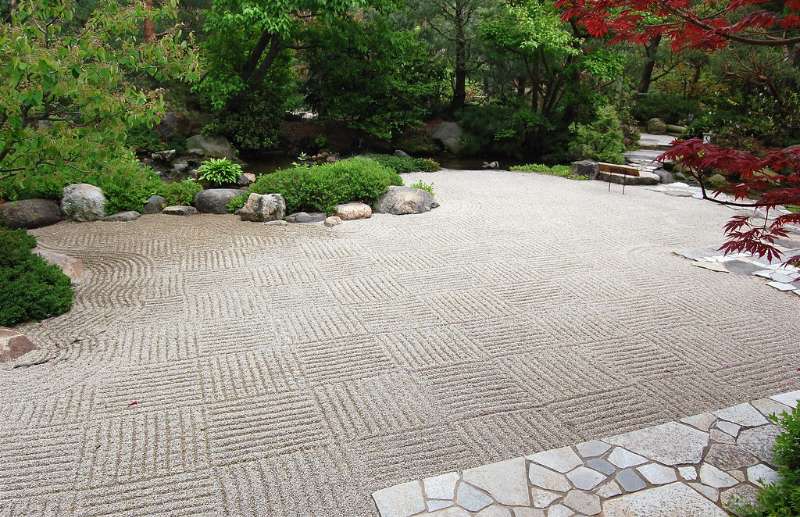
In contrast to a Western garden, a Japanese garden can be enjoyed in every season. What’s more, it’s not likely to feel outdated anytime soon.
Read on if you want to design a garden that can be enjoyed throughout the year!
What Is a Japanese Garden?
Less is more when it comes to a Japanese garden. To the uninitiated, it may seem empty, but for the Japanese, empty space is a feature in its own right.
In this style, features of the garden embody the landscape they came from, and the natural elements they’re made of.
A rock becomes a mountain, a fountain becomes a river, and a potted plant becomes a tree.
With this in mind, lines and angles should not feel fabricated. All elements must feel natural, and imperfections retained.
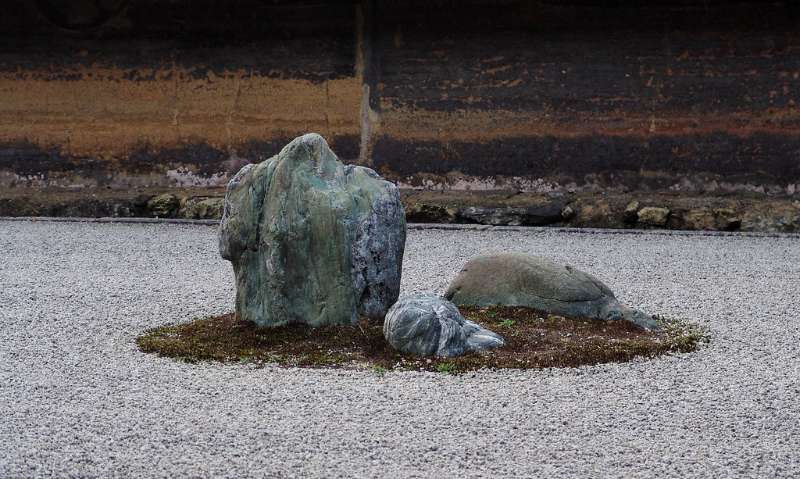
Besides that, you will notice that Japanese gardens are ordinarily enclosed. It is rare to see these gardens open to the world.
Customarily, gardens like these are surrounded by walls to ensure that outside factors will not disturb its balance.
Good to know: There are several types of Japanese gardens, such as Tea Gardens, Zen or Dry Rock Gardens, or Walking Gardens.
Though naturally asymmetric and dry rock gardens are often the best choice for your home and backyard, what matters is your ingenuity in combining classic design ideas.
Best Japanese Garden Design Ideas
If you are looking into designing your own Japanese garden, here are a few of these design ideas that you can adapt to your own space.
Remember you can blend in garden styles to come up with your personal Japanese garden.
1. Naturally Asymmetric Japanese Garden
You often find water features like ponds, small streams, and fountains in Japanese gardens. Traditionally, you might find Koi Fish in these waterways.
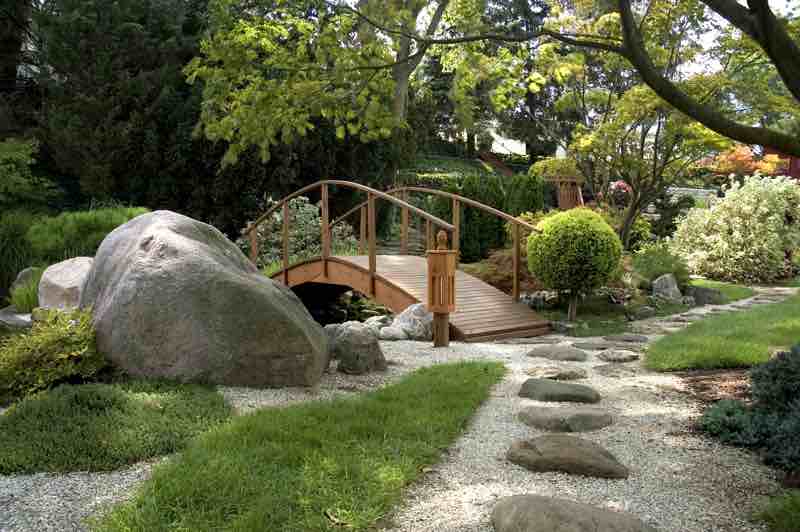
Pictured above is a traditional, asymmetric Japanese garden. Notice the small imperfections on the rock features and shrubs. The Japanese believe these add depth to the aesthetics of the garden, and we do too.
The trees and grassy bits seem totally natural, and the general ambiance of the garden is meant to reflect a forest, not something man-made.
2. Arched Bridge Japanese Garden
Just like our first idea, this one focuses on the arched bridge feature of many Eastern gardens and parks.
Traditionally, these bridges are made out of bamboo, which is something you can use yourself to build various garden elements.
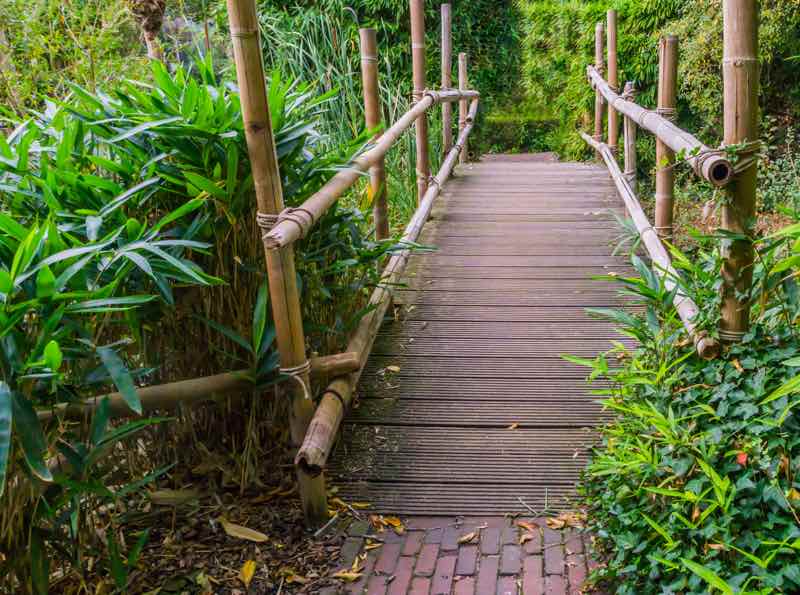
Arched bridges are commonly made of wood and stained colored. They can also be made darker with red accents.
Tip: If you want to add a classic Japanse feature to your garden, install an arched bridge, bamboo or not, over some running water.
3. Wabi-Sabi Zen Garden
Prominent to the Japanese garden style is the element of “Wabi-Sabi”. In Japanese aesthetics, this basically means the acceptance of imperfections, a running theme in these garden design ideas.
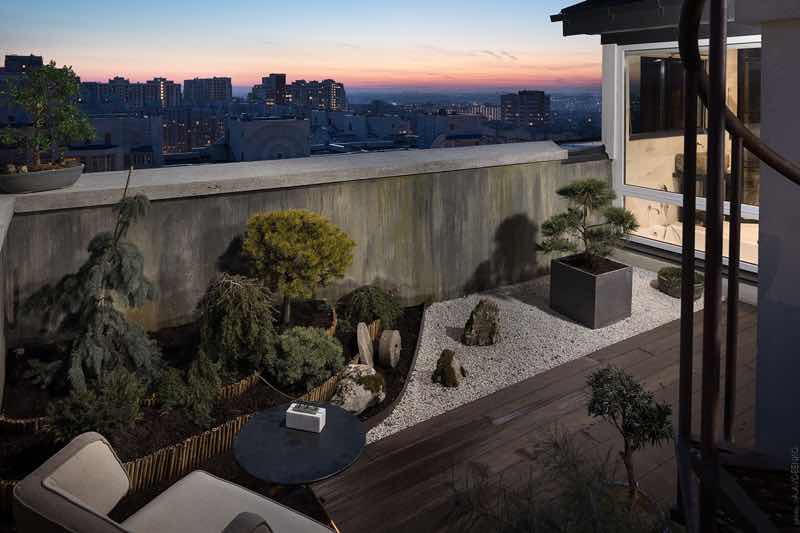
In adopting this element, your garden will embody themes of simplicity, ruggedness, modesty, and intimacy.
You can see this in the picture above. The simple and rough style–almost disorganized –contrasts with the very organized and, some would say, souless, view of the city.
4. Bamboo Japanese Garden
More than a type of wood, bamboo is part of Japanese culture. It’s one of the strongest plants in the world and can be bent to fit the kind of structure you want to build without sacrificing its integrity.
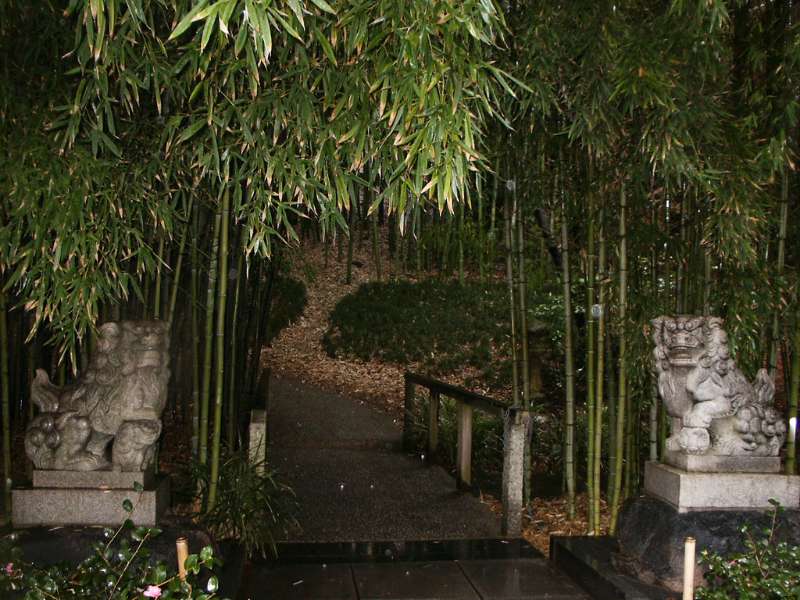
Did you know: Bamboo can grow up to three feet every single day! This makes it the fastest growing plant in the world.
If you want something that grows fast and gives an authentic feeling to your garden, bamboo is the way to go.
5. Water Features Japanese Garden
Another pervasive aspect of the Japanese style is the water feature. This comes in many shapes and sizes: streams, ponds, waterfalls, fountains, etc.
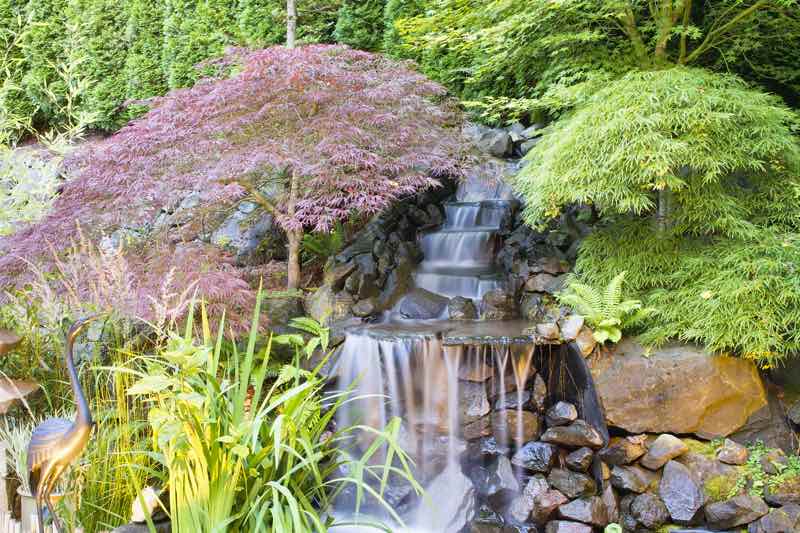
Tip: If you are going for a natural look that emphasizes the feng-shui of your garden, it might be good to combine these features with an assortment of rocks.
This is what the owner above has done, combining colorful yet subtle flora with bird statues, authentic greenery, and piling up the rocks to give the garden the look of a real-life waterfall.
6. Simple Bamboo Fountain
Besides planting your own bamboo, adding bamboo fountains can be the perfect way to customize your Japanese garden.
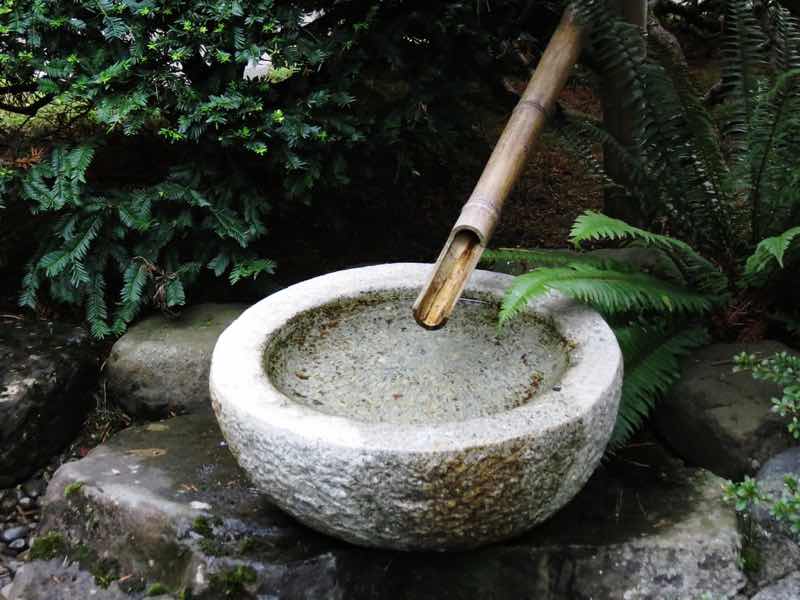
In the picture above, you can see a relatively simple design of a bamboo fountain, leading into a small stone bowl in a lush-looking garden.
These fountains are relatively simple to make, they add a feeling of peace and serenity to your garden, and can be an excellent way to brag about your DIY skills to your neighbors.
If you feel like treating yourself, you can buy a bamboo water fountain like the one below.
7. Japanese Walking Garden
Walking gardens are also very typical in Japanese designs. They typically consist of a stone path, gravel beds, and rope fences. This is a versatile design that you can adapt to your space and needs.
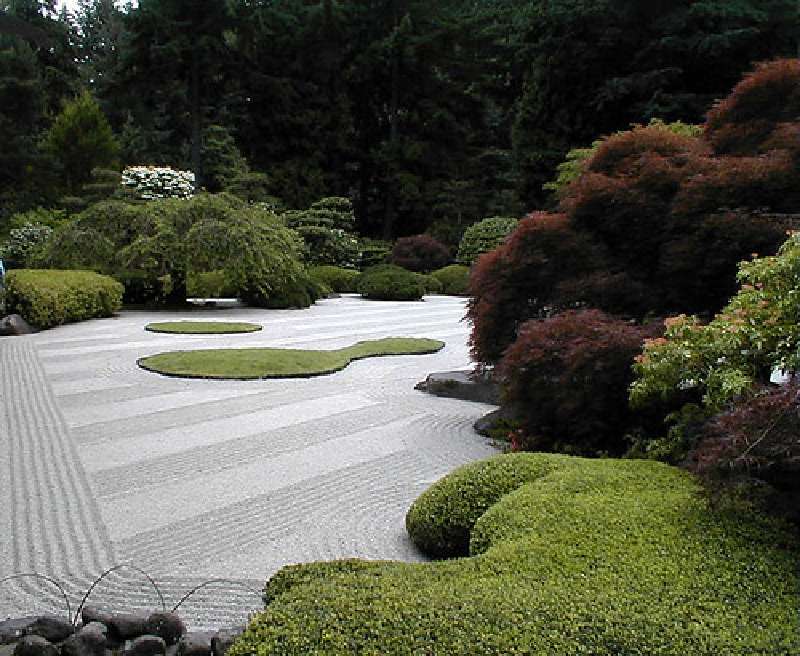
To begin, you’ll first need the gravel bed as a foundation. You’ll then need to get some large flat rocks to use as stepping stones and lay these out as your path.
Design this path to your liking. Weave it through your favorite features while creating a balanced and harmonious look.
8. Garden with Japanese House
This type of house or cabin is common in many Japanese households. These types of structures are ideal for meditating or appreciating nature.
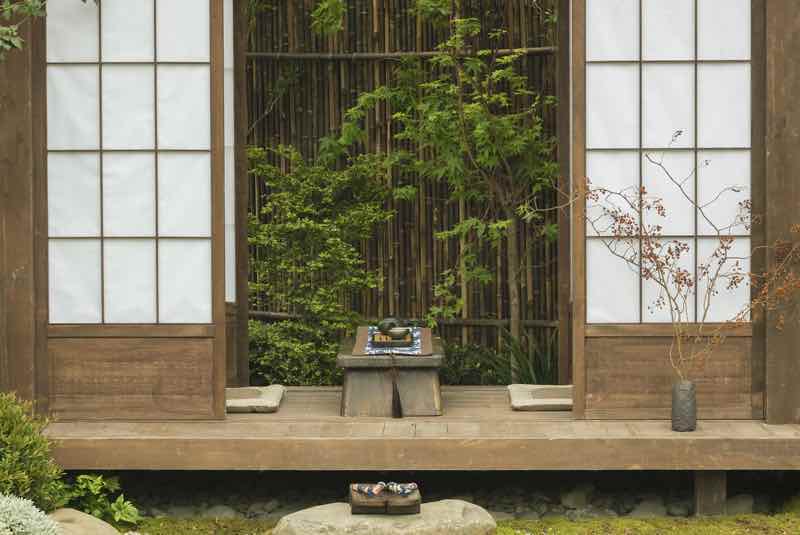
So why not create your own? Quite a bit of work is required, but you could create your own personal meditation retreat and “zen corner”.
Of course, this would require the man-hours and raw materials, but if you’re looking for a truly unique Japanese garden design idea, this would be the way to go.
9. Moss Bed Garden
Moss offers a sense of old age and rustic charm. The “Sabi” part of the ‘Wabi-Sabi’ we mentioned earlier focuses on age and time, so introducing moss to your garden touches on that aspect.
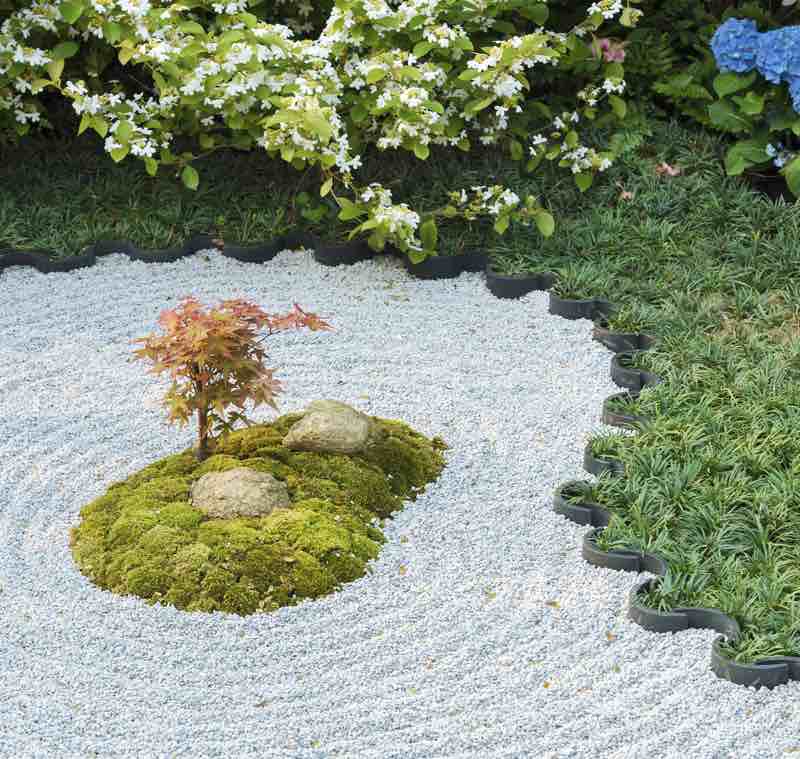
Moss can basically grow on any hard surface. But our advice is to first spread out your gravel bed, before placing some larger rocks in the center and covering them in moss, like in the picture above.
Tip: Mist your moss regularly and water about twice a week. Remember to use filtered water!
10. Waterside Zen Garden
Another great design idea is to place your Japanese garden next to a body of water: a lake, river, or pond.
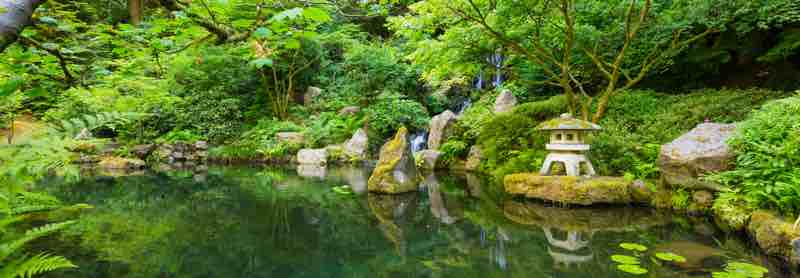
This doesn’t just look amazing, it will also facilitate the growth of natural water plants. These types of plants have a luscious green color and will add an amazing feeling to your garden.
11. Traditional Japanese Garden
This is a more traditional attempt to create a Japanese garden. In this one, many of the elements and features described in this article are combined to create an authentic “far-eastern” feeling.
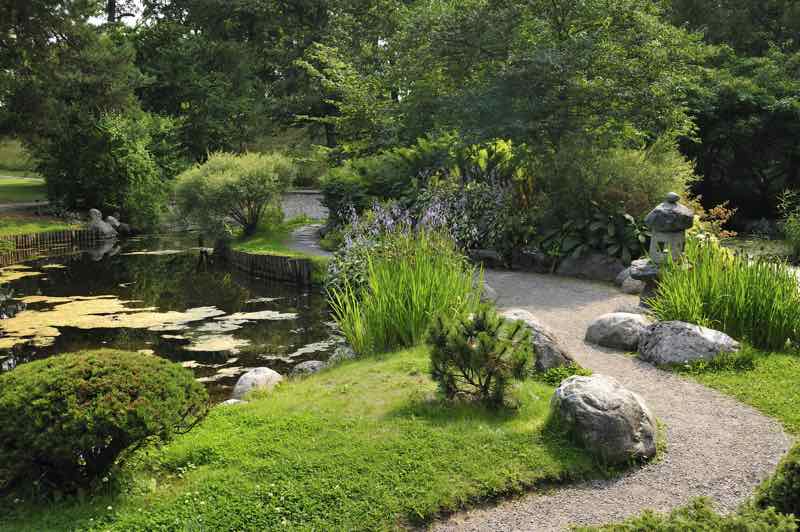
The key, as always, is to create something that feels natural.
Make your winding walkway flow around pretty rocks, dense shrubs, and antique stone lanterns to create the kind of place where people used to take a meditative walk in ancient Japan!
12. Stone Lantern Pagoda Japanese Garden
If you really want to highlight the Zen of your Japanese garden, then why not bring some of these ancient-looking stone lanterns (otherwise known as Pagodas) into the mix?
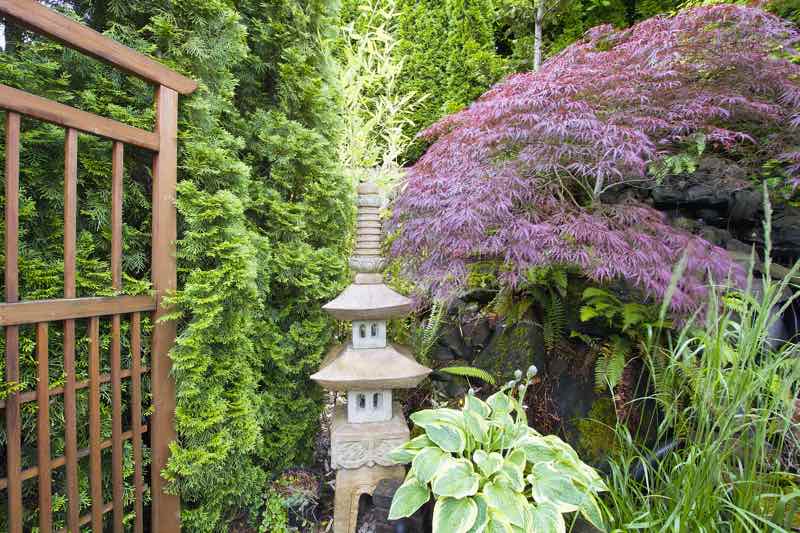
Place one in between your greens to light up your garden at night and give it a mystical tone!
Idea: Alternatively, you could place a ring of them around your garden to illuminate the area for when you have guests.
These Pagodas are so great because they work really well as both supplementary features and as a centerpiece.
Here’s are some of our favorites.
13. Japanese Garden with a Stone Bench
Since Japanese gardens are famous for providing a space for meditating and contemplating, why not add a bench too?
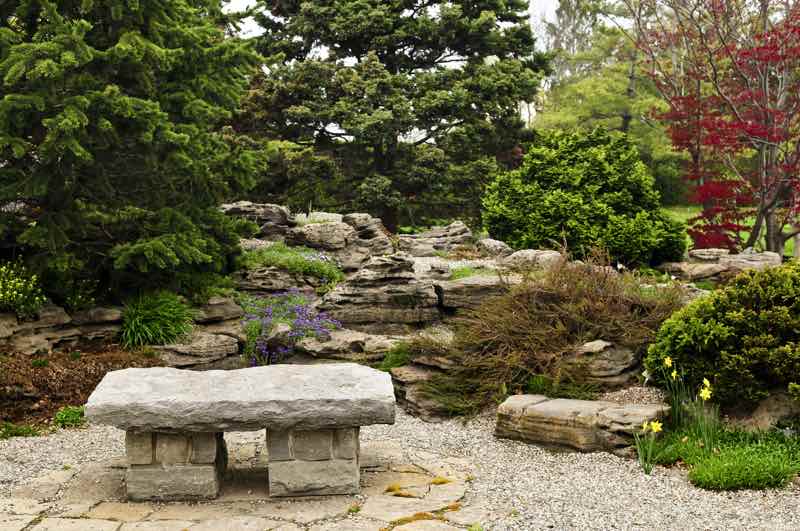
You can relax here, possibly raking some zen patterns into the sand or gravel.
Tip: You can also install outside garden lights to allow you to unwind at night.
14. Sea of Stones in a Japanese Garden
Instead of placing small groups of rugged-looking rocks around your garden, as in traditional Japanese designs, you could rather opt for a “sea of stones”.
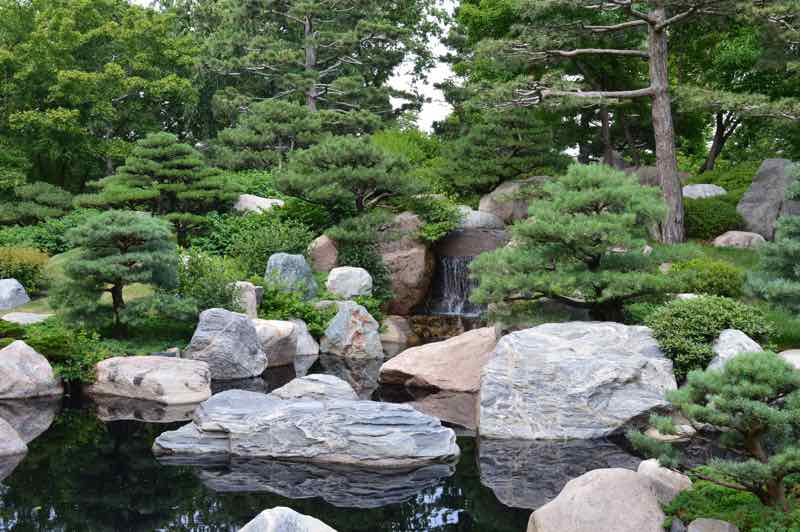
As pictured above, this means making your garden look like some kind of pre-historic waterfall. Who wouldn’t want that?!
This type of garden is suitable for those with generous space and it exhibits the asymmetry and balance concept.
Of course, not everyone has this kind of space… Watch the video below to find out how to build a slightly smaller version.
Bonus Japanese Garden Ideas
So those were our 14 favorite Japanese garden ideas.
We hope they warmed up you up and sparked a few ideas for your garden.
Besides those, though, we also have a couple of more general ideas that might help with a bit of inspiration.
Japanese Tea Garden
In essence, this concept blends in tea gardens with Japanese Gardens. The result is a calming zen garden that’s perfect for welcoming and entertaining guests.
Tea gardens are normally made up of an outer area to take a stroll in, as well as a small structure in which to serve tea.
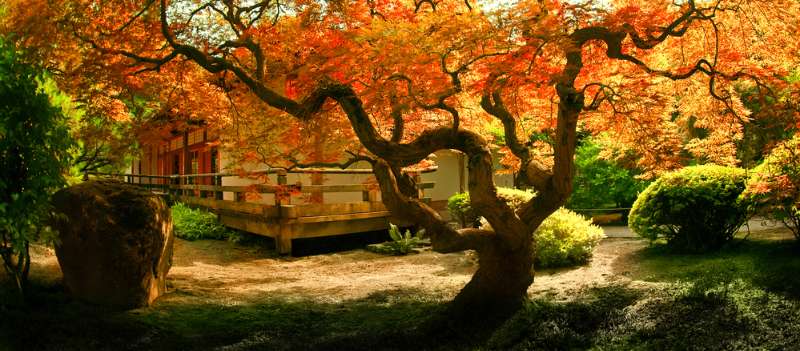
For the most part, the outer garden includes a low gate and a stone path leading to the entryway of the teahouse where tea parties are being held.
These tea gardens are common in Japan nowadays and form an essential part of Japanese culture.
Japanese Rock Garden
The Japanese Rock Garden is also known as a dry rock garden or landscape garden.
However, it differs from the common rock garden since instead of being surrounded by plant life, the Japanese rock garden includes minimal or no plants at all.
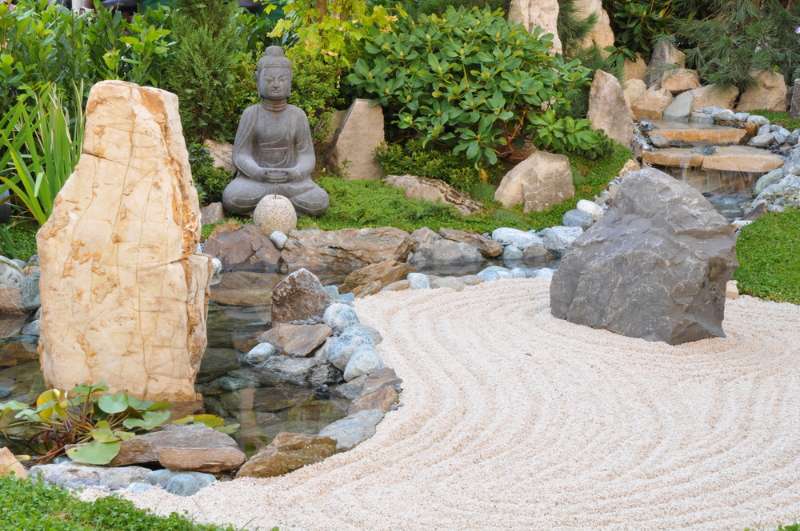
Normally comprised of dry rock, gravel, sand, and huge standing rocks, this garden style is meant as a personal project which illustrates one’s reflections.
Fundamentally, gravel or sand embodies water and sizable rocks signify islands.
Famous Japanese Gardens
As a little bit of extra inspiration, here are some well-known Japanese gardens from throughout the world.
Anderson Japanese Gardens
Located in Rockford, Illinois USA, the Anderson Japanese Gardens opened in 1978. Founder John R. Anderson took inspiration from his travels to Japan and Portland Japanese Garden.
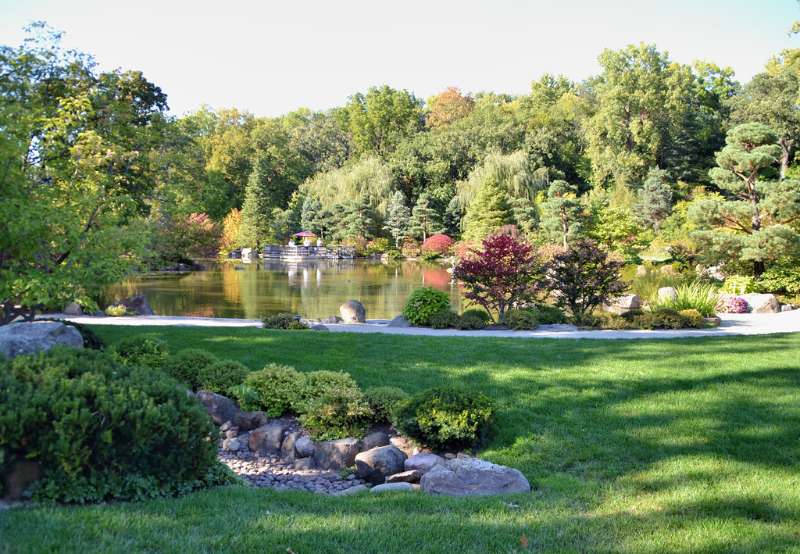
This famous garden showcases pristine design, wonderful walkways, and an assortment of fish, minks, and ducks.
Shofuso Japanese House and Garden
This famous Japanese Garden is situated in West Fairmount Park, Philadelphia USA. It boasts breathtaking scenery, serene ponds, and a classic Japanese house.
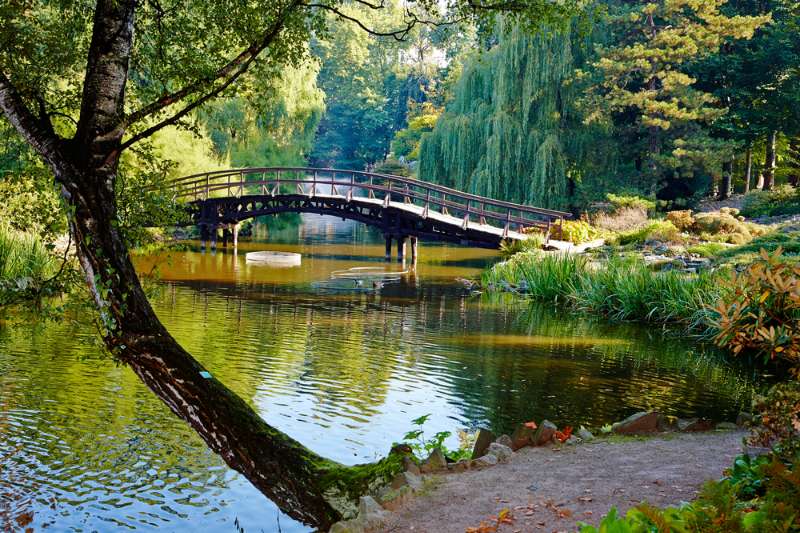
These gardens are known as part of the best three Japanese gardens in the United States.
If you pay them a visit, you can see many traditional shows and functions that take place in the house.
Portland Japanese Garden
A stunning Japanese Garden opened in 1967 in Portland, Oregon USA. This renowned garden is designed by Professor Takuma Tono. Pictures of its spectacular maple trees have gone viral all over the world.
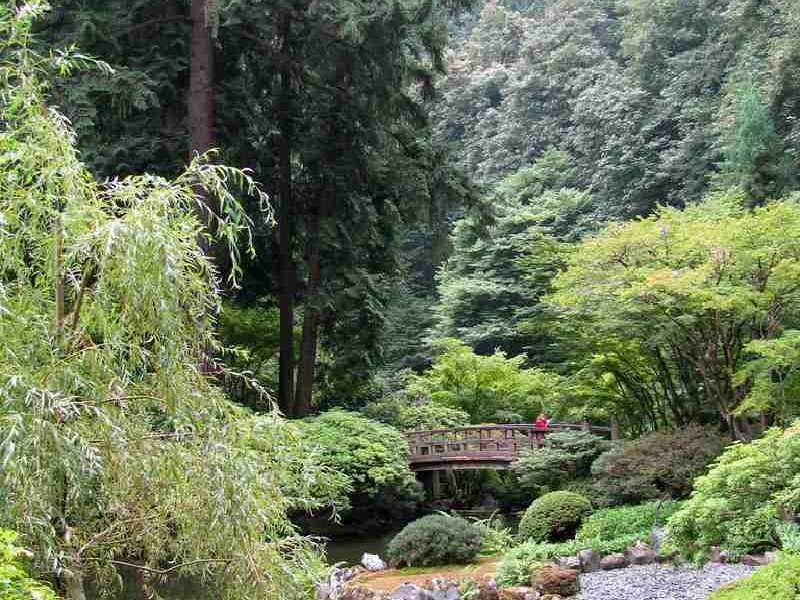
In visiting this garden, you will encounter a variety of plants, walking paths, and pristine designs to inspire your own garden at home.
Adachi Museum of Art
The Adachi Museum of Art in Yasugi, Japan boasts a fabulous modern Japanese art collection.
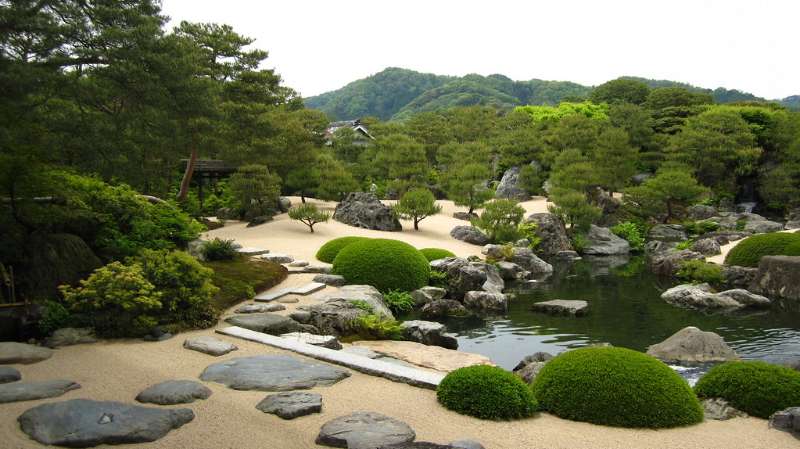
Aside from this, visitors flock to its remarkable lush garden that encircles the museum.
This popular site has frequently received accolades from gardening magazines as one of the best Japanese gardens.
Rikugien Garden
Found in Tokyo, the Rikugien Japanese Garden features hills surrounding a large pond and intertwining trails. This marvelous garden’s name alludes to the fact that it captures scenes from famed Japanese poems.
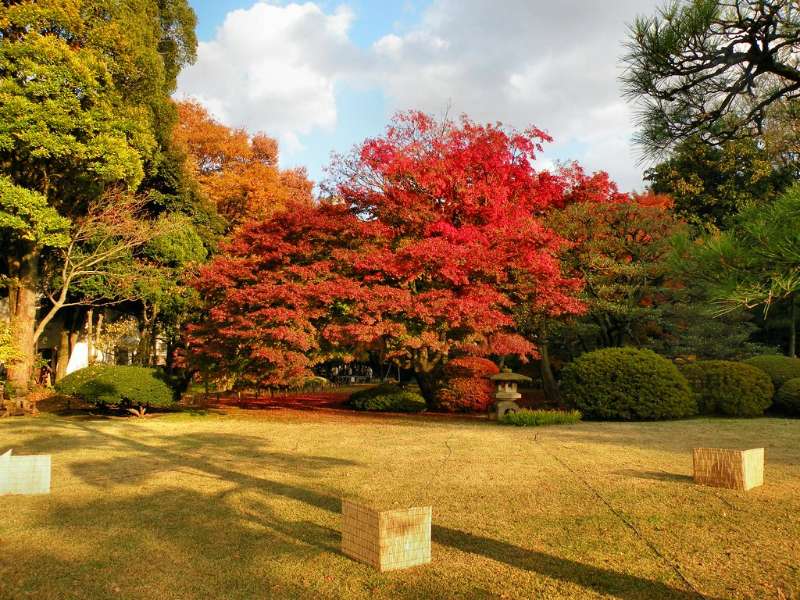
It’s a surprisingly serene area in Japan’s busiest city. So, if you ever find yourself in Tokyo and want to avoid the hustle and bustle, this is the place to visit.
Japanese Garden Plants
To finish off our article, below are several garden plants that are commonly found in Japanese gardens.
We’ve also featured some links to where you can get them, so you don’t waste too much time looking for them.
Lotus
For Japanese gardeners blessed with water features, the Lotus plant is a vital addition. Seeing a mature Lotus blooming is admirable. It has grown leaves that are three feet in diameter.
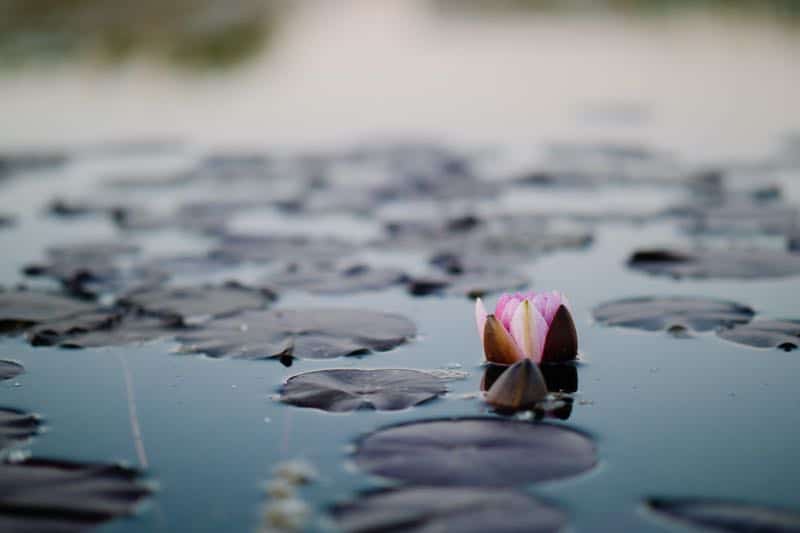
As a home gardener, you can produce dwarf varieties of the plant in wood barrels or midsize ponds. If you attempt this, be careful that the roots do not freeze.
Iris
If plagued with a sodden area in your garden, you can opt to plant Japanese irises that thrive on moisture all through the year.
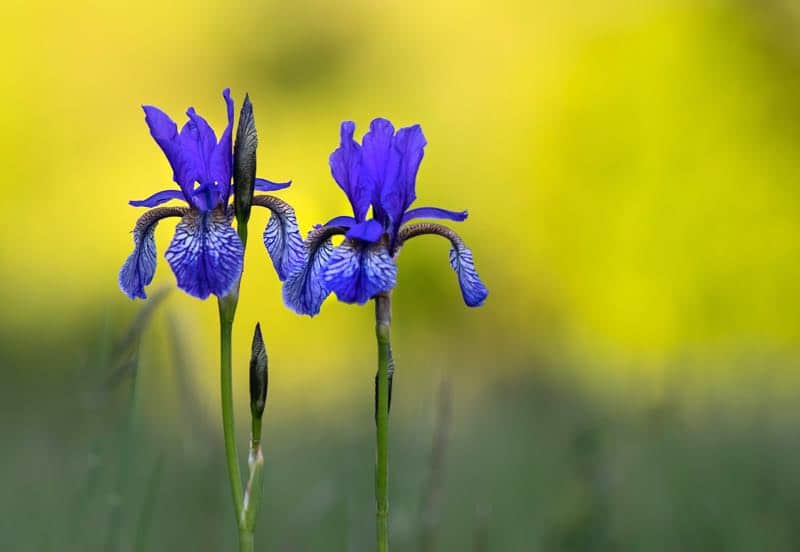
This plant is continually starving not only for fertilizer but also for water. Be that as it may, it will reward you with flower stalks that are up to five feet tall.
The only thing left for you to do is separate old clumps every few years.
Bamboo
Bamboos are a regular figure within Japanese gardens. Bamboos are everywhere in Japan but one never tires of them.
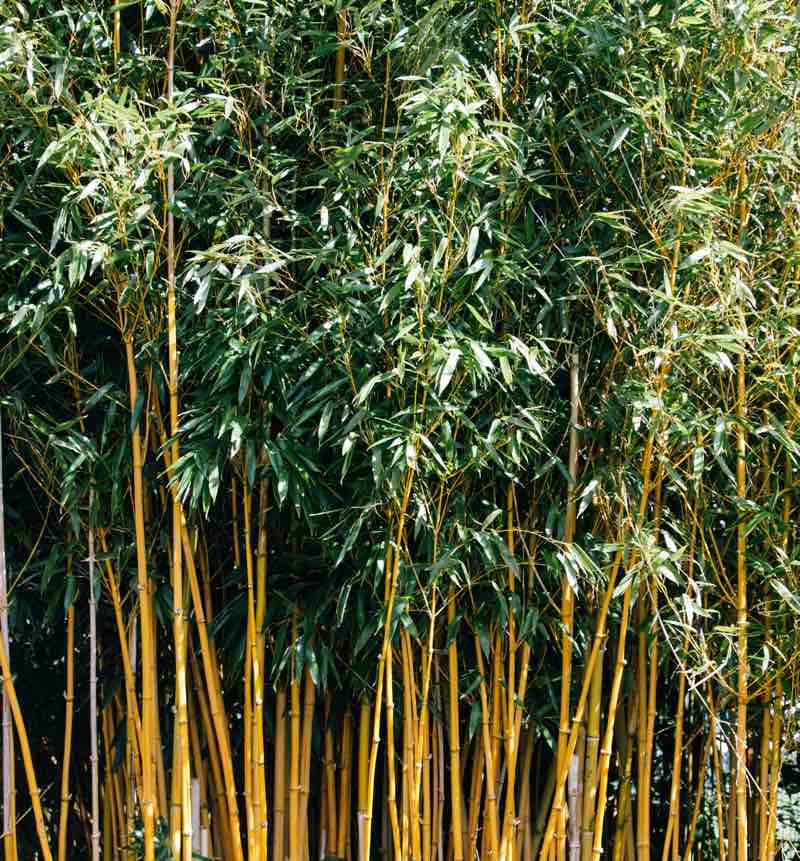
For example, when bamboo is harvested in Japan, it’s used in homes for chopsticks, fences, fans, and more.
Tip: When choosing bamboos, opt for the clumping type instead of the ones that spread by runners. Those types are invasive and even prohibited in some regions.
Like many other plants, Japanese bamboo prospers on shade and frequent moisture. Avoid watering beyond the normal limits.
Azalea
You will find these trumpet-shaped flowers in various hues of yellow, salmon, pink, red, white, and violet.
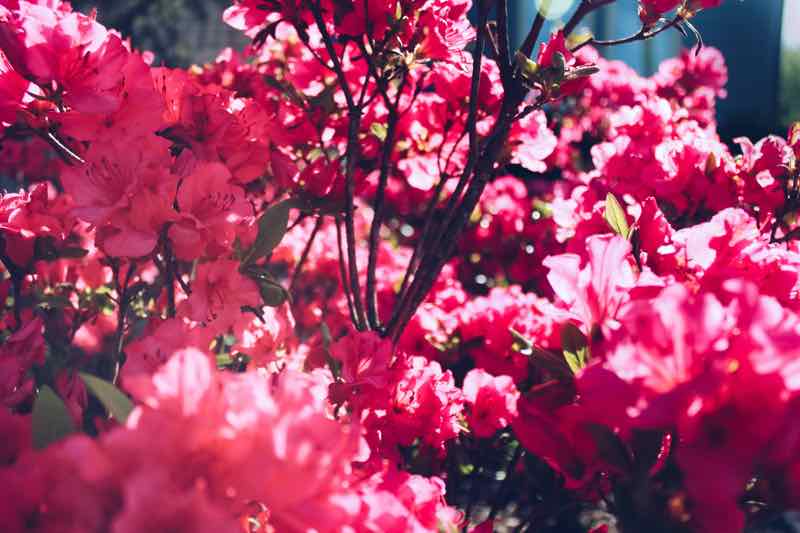
Japanese gardeners have been cultivated Azaleas for centuries. However, at present, modern hybridizers have discovered reblooming azaleas.
In other words, no need to wait for spring to adore this thriving shrub!
Good to know: Azalea plants flourish in moisture but they will perish in damp winter soil.
Hosta
Last in our list are Hosta plants. The naturalized types found throughout Japan are natural and authentic, especially compared to the North American hybrids.
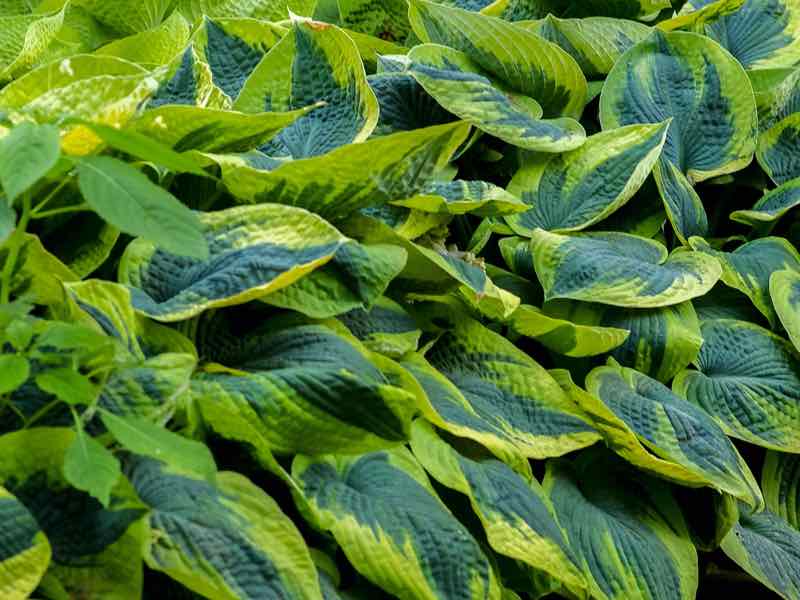
Since this plant comes in so many sizes, shade, shapes, you can build a rich garden wholly comprised of Hostas.
Good to know: While good irrigation is key to growing Hosta, keep in mind this Japanese plant is vulnerable to fungal disease and crown rot brought on by excessive wet conditions.
Frequently Asked Japanese Garden Questions
Have you ever wondered whether a Japanese garden will work for you? The good news is almost anyone can have a successful one as long as they have the right know-how.
Here are some frequently asked questions about Japanse gardens we hear and our answers to them, to help you get started off on the right foot.
What are the factors that make up a Japanese garden?
The key factors that make up a traditional Japanese garden include rocks, bridges, water features, and plants. If you want to create one for yourself, check out our Japanese garden inspiration guide now.
Are Japanese gardens expensive?
There is a Japanese garden design that is right for almost any budget. Remember that you can purchase features for your garden at a slow pace or save up for the bigger features. Rome wasn’t built in a day, and neither will your Japanese garden!
What is the purpose of a Japanese garden?
The purpose of a Japanese garden is to add serenity to your life. It’s a perfect addition to any backyard, regardless of size or location. So, if you’re looking for a way to zen your life, try the Japanese approach! Get started now with our gardening design inspiration ideas.
Let Go of Disorder and Useless Details
Japanese gardens are organic and natural in design. They provide a fine blend of creativity with austerity to create a remarkable, timeless look.
Essential in achieving this Japanese style garden is to include the principles and elements which are everywhere in Japanese culture.
Adding these aspects will ensure that you attain that tranquility and balance renowned in this kind of garden.
The garden design ideas we shared with you can help you get started, but remember that the whole point of creating a Japanese garden is to make it your own–a reflection of your mind and presence.
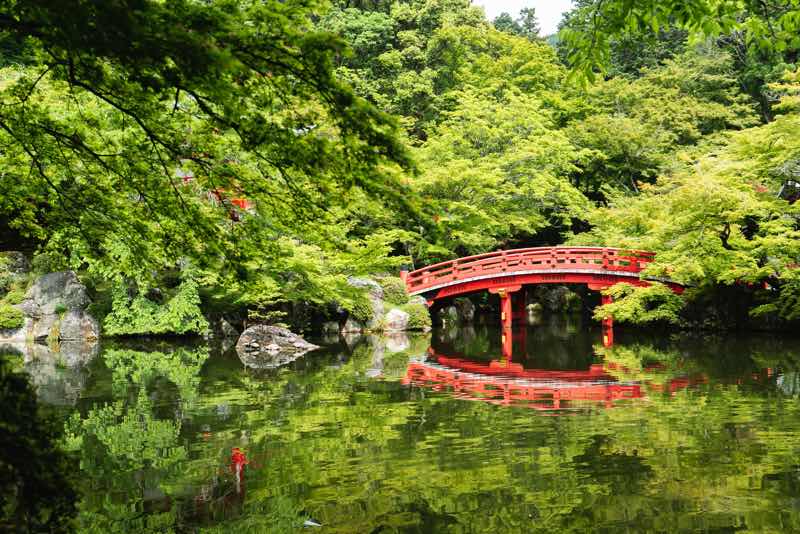
Crucial in Japanese gardens is the idea of balance. The elements you include in your garden should work well with other features to create the landscape.
Whether or not you meditate, a Japanese garden can become an oasis of peace and relaxation for you and those closest to you.
We believe it’s one of the most inspiring gardening projects you can undertake. If you’ve come this far, we hope you won’t stop now.
Create your own Japanese garden and tells us all about it. Drop us a comment or reach out to us on social media. We’d be delighted to hear from you!

Hi,
great article thank you for that! But do you have something more like these photos? Or maybe, can you add some inspiration here please?
Thanks for your suggestion! We added some more pictures:)
Tx a lot for ur sharing ideas! Picked up many elements for my amateur garden! Am obliged.